
- 1935: Yacht Ngataki reports via Awarua Radio

One of New Zealand’s best-loved books is South Sea Vagabonds , Johnny Wray’s amazing true story of building and sailing his yacht Ngataki during the 1930s.
In this news report, Awarua Radio relays the welcome news that Ngataki and her crew have survived another of their adventures.
New Zealand Herald , 11 March 1935, p 8

THE NGATAKI’S RETURN YACHT NEARING DOMINION “ALL WELL” REPORTED
[BY TELEGRAPH — PRESS ASSOCIATION] WELLINGTON, Saturday
The director-general of the Post and Telegraph Department has received the following message from the superintendent of the Awarua radio station:— “ Ngakuta reports passing the yacht Ngataki in latitude 41.33 south, longitude 167.06 east from Hobart. Wishes reported all well.”
The position of the yacht at the time of making her report was approximately 300 to 350 miles west of Cape Farewell.
Navigating this site
- Latest updates
- 2018 Commemorations
- History of NZ spark stations
- Radio callsigns list
- Recruitment advertising
- Radio Section, part 2: 1939-1940
- Radio Section, part 3: 1941-1943
- Radio Section, part 4: 1943-1944
- Radio Section, part 5: 1944-1946
- Radio Section, part 6: 1946-1950
- Radio Section, part 7: 1950–1955
- Radio Section, part 8: 1955–1960
- Radio Section, part 9: 1960-1965
- Radio Section, part 10: 1965-1987
- Radio Section, part 11: 1965-1987
- Radio Section, part 12: 1965-1987
- Radio Information Bulletins
- Additional Comments on NZPO Crystal Laboratory
- Radio regulation in NZ
- 1907: Marconi proposes to build NZ wireless stations
- 1909: First recorded case of radio interference in NZ
- 1909: Wireless to link the South Pacific
- 1912: German wireless stations for Pacific
- 1912: Wireless to link New Zealand and Australia
- 1912: RMS Tahiti aims to break wireless record
- 1912: How wireless works
- 1912: Letter 1 to NZ from Telefunken
- 1912: Letter 2 to NZ from Telefunken
- 1913: Wireless reaches nearly 3000 miles
- 1913: Post Office progress in radiotelegraphy
- 1914: The Australasian Wireless System
- 1914: Radiotelegraph charges as low as possible
- 1914: NZ wireless stations and operators praised
- 1914: Military commissions for P&T staff
- 1915: Letter from De Forest
- 1916: Wireless weather forecasts resumed
- 1923: Portable radio tests in Wellington
- 1924: Government steamer tests radio direction-finding
- 1924: NZ radio amateurs communicate with England
- 1926: Ships limit 450m use to reduce interference
- Morse in the NZ Post Office
- 1934: Changes to radio callsigns
- 1935: Government upgrades wireless stations
- World War 2 ZC1 transceiver
- 1958: NZPO Report on Overseas Radio Services
- 1960: NZPO Report
- 1962: Assessing effect on radio of nuclear detonation
- 1963: Information for new NZPO staff
- 1970 – 1979
- 1980 – 1989
- 1990 – 1996
- Little mysteries
- Auckland Radio
- Awanui Radio Managers
- 1911: Search narrows for Northland wireless site
- 1911: Awanui site plan
- 1912: Preliminary work completed at Awanui
- Awanui accommodations
- Awanui tower and aerial
- Awanui spark transmitter
- Awanui operating room
- Awanui engine house
- 1913: New Zealand’s first wireless press report
- 1913: High-power Awanui wireless station on air
- 1915: Awanui Radio replaces Auckland station
- 1916: Nillson appointed officer in charge at Awanui
- 1920: Navigator seeks time signals from Awanui
- 1921: Awanui Radio VLA location not ideal
- 1928: Pellow leaves Awanui, closure likely
- 1930: Twopence would buy Awanui mast
- Audio: The spark-gap men of Awanui Radio
- 1950s: Photos at Awanui
- 1970: Memories of Awanui
- 1980: 50th anniversary of the closure of ZLA
- 1994: Photos at Awanui
- 1995: Awanui ZLA returns
- 2002: Awanui active again!
- 2004: Awanui Radio ZLA gets infringement notice
- 2013: Hams mark 100 years since VLA opening
- 2015: Update on the new Awanui Radio ZLA
- 2018: Visit to the site of Awanui Radio
- Radio amateurs at ZLB
- 1911: Search on for Southland radio station site
- 1912: Awarua station described in detail
- 1913: P&T prepares to take over Awarua Radio
- 1913: Awarua and Awanui stations to open tomorrow
- 1913: Awarua Radio opens
- 1918: Wizard lighting system a success
- 1929: AW Head to take command at Awarua Radio
- 1930: Amateur licence for Awarua Radio station
- 1938: Awarua Radio’s original 400ft tower to fall
- 1938: Awarua Radio’s 400ft tower demolished
- Frank Barlow remembers Awarua Radio 1939-1941
- Water treatment plant at Awarua Radio
- 1940: Additions and renovations at Awarua
- 1941: Three new towers at Awarua Radio
- Frank Barlow remembers Awarua Radio: Sequel
- 1941: RT service for small ships at Awarua Radio
- 1945: Aerial plan for Awarua Radio ZLB
- 1945: Awarua Radio steps up when lines go down
- NZ Navy Wrens in secret ops during WW2
- 1953: Green fingers at Awarua Radio
- 1956: The Awarua Radio story
- 1960s: Unknown voices of Awarua Radio
- 1967: No more train stop at Awarua Radio
- 1967: Fire at Awarua Radio ZLB hostel
- 1967: Awarua photo feature
- 1970: ZLB featured in The Katipo magazine
- 1975: New solid-state Nautel transmitters at ZLB
- 1976: Two Awarua Radio masts to topple
- 1976: Two Awarua Radio masts demolished
- 1976: Two new towers for 500 kHz at Awarua
- 1977: Third Awarua Radio tower to fall
- 1978: New transmitter building for Awarua Radio
- Memories of Ron Lowry and Awarua in the 1970s
- 1984: Awarua ‘airport’
- 1985: Map and plan of Awarua Radio ZLB
- 1985: Plans of housing at Awarua Radio
- 1985: Plans of operating buildings at Awarua Radio
- 1988: 75th jubilee plans
- 1988: 75th jubilee event
- 1991: Awarua Radio closes
- Unwin Radar
- Awarua Tracking Station
- 2014: Awarua centennial
- 2016: Awarua researcher seeks home guard stories
- 2016: New Awarua book
- 2013: Awarua museum supporters at Owaka
- 2015: Museum set to open
- 2015: Museum opens
- 2016: Awarua theatre
- Creed telegraph key
- Chathams Radio Staff
- 1902: Chatham Islands ask for wireless service
- 1913: Chathams wireless station to open in August
- 1913: Davies takes charge at Chatham Islands Radio
- 1913: JL Davies helping to build Chathams station
- 1913: New wireless station opened at Chathams
- 1913: Chatham Islands station performing well
- 1913: Wireless man tells of Chatham Islands life
- 1917: Life at Chatham Islands wireless station
- 1934: Wind power for Chatham Islands Radio
- 1939: Chatham Islands in NZ history
- 1941: Radio station off air while Holmwood attacked
- 1946: First flights to Chatham Islands
- 1956: A radio operator’s life on the Chatham Islands
- Jack Ryan remembers ZLC 1957-1966, part 2
- Jack Ryan remembers ZLC 1957-1966, part 3
- Jack Ryan remembers ZLC 1957-1966, part 4
- Jack Ryan remembers ZLC 1957-1966, part 5
- Jack Ryan remembers ZLC 1957-1966, part 6
- Jack Ryan remembers ZLC 1957-1966, part 7
- Jack Ryan remembers ZLC 1957-1966, part 8
- Remembering Chatham Islands radiotelegraph
- 1988: 75th anniversary of Chatham Islands Radio
- Transmitter site
- Receiver site
- MEOSAR earth station
- 2003: When trouble strikes, Taupo Radio is listening
- 2016: Tongan radio op trains at Taupo Radio
- 2016: Taupo Radio antennas damaged by ice
- Wellington Radio Staff
- 1911: Land to be acquired for Tinakori Hills station
- 1911-1912: Tinakori Hill construction
- 1912: Sketch of Tinakori Hill wireless aerial
- 1912: Opening of wireless station on Tinakori Hill
- 1914: Radio site to be named ‘Mt Wakefield’
- 1923: Steel tower erected
- 1926: Steel tower collapses
- 1929: Wellington Radio to get short-wave ability
- 1934: Extension at ZLW receiving station
- 1941: RT service for small ships at ZLW Wellington
- 1945: Access to Tinakori Hill under review
- 1954: Clyde Williams returns to ZLW
- 1958: Clyde Williams returns to ZLW for last time
- 1965: The life of a junior technician at ZLW
- Mt Crawford receiver site
- Grid-block keying for small ships transmitter at ZLW
- Mysterious misbehaving Navy transmitter
- 1985: Description of ZLW site and buildings
- 1993: Wellington Radio ZLW closes
- 2011: Centenary of Wellington Radio opening
- 2013: 20th anniversary of Wellington Radio closure
- 2017: Former techs visit Wellington Radio ZLW site
- 110th anniversary programme
- Chief Technicians
- Himatangi Radio in detail by George King
- Himatangi Radio bearers
- Himatangi carrier room
- Himatangi drive room
- Underfloor services
- Himatangi Radio aerial feedlines
- Emergency power system
- STC DS13 transmitter
- 1951: Himatangi Radio under construction
- 1953: Opening of Himatangi Radio
- 1953: Himatangi sends Queen’s Christmas message to world
- 1968: Wahine storm strikes Himatangi
- The life of a Himatangi technician
- Raoul and Campbell Islands radio circuits
- Survival stories from Himatangi Radio
- 1988: Himatangi house sales stalled
- 1996: Himatangi Radio reunion
- 1945: New radio station at Makara
- 1945: Evening Post feature on Makara Radio
- 1945: Heavy traffic as radiotelephone resumes
- 1945: How two-way radio link is operated
- 1945: First call to New York via Tinakori and Makara
- Makara Radio 1950-1959
- Makara Radio 1960-1969
- Makara Radio 1970-1979
- Makara Radio 1980-1996
- Makara Radio 1996-Now
- Radiotelephone Terminal Services
- Radiotelegraph and Cable Terminal, Wellington
- 1917: Wireless for lighthouses
- Baring Head Lighthouse
- Brothers Island Lighthouse radio station
- Cape Reinga Lighthouse
- Centre Island Lighthouse
- Cuvier Island Lighthouse
- 1983: Dog Island Lighthouse profile
- Farewill Spit Lighthouse
- Kahurangi Point Lighthouse
- Pencarrow Lighthouse
- 1925: Wireless at Puysegur Point Lighthouse
- 1942: Fire destroys Puysegur Point lighthouse
- Stephens Is Lighthouse
- Tiritiri Matangi Lighthouse
- Apia Radio Managers
- 1913: Materials arriving
- 1914: NZ asked to seize Apia wireless station
- 1914: Samoa surrenders
- 1914: Samoa occupation
- 1919: Telefunken news (original German)
- 1919: Telefunken news (English translation)
- 1963-1964: Observing the ionosphere from Campbell Island
- Caswell Sound Radio – Part 2
- Christchurch Radio
- Gisborne Harbour Board
- 1915: Wireless operator describes life on Macquarie
- 1915: Macquarie Island radio station closed
- 1946: Frank Barlow at Milford Sound Radio
- Clyde Williams at Milford Sound – Part 2
- Clyde Williams at Milford Sound – Part 3
- Clyde Williams at Milford Sound – Part 4
- Clyde Williams at Milford Sound – Part 5
- Clyde Williams at Milford Sound – Part 6
- Clyde Williams at Milford Sound – Part 7
- 1968: VHF radio testing on the Milford Track
- Milford Sound Aeradio
- New Caledonia
- 1920: New wireless station in Tonga
- Port Moresby Radio
- 1910: Change of location raises cost and questions
- 1911: Pennant Hills official testing
- 1912: Pennant Hills model for Awanui and Awarua
- Pitcairn Island Radio
- Quartz Hill (NZBS)
- Raoul Island: 1939-1949
- 1950: Visiting vessels
- Raoul Island transport
- Bull Paddock adventure
- Weather observation
- Rarotonga Radio (Cook Islands)
- Rotoroa Island
- Roviana (Solomon Islands)
- Scott Base: 1956-1960
- Scott Base: 1960-1970
- Scott Base: 1970-1980
- Scott Base: 1980-1992
- Vanda Station (Antarctica)
- Tabuaeran (Fanning Island)
- 1915: Papeete radio opens
- Wellington Dominion Observatory
- Other marine radio stations
- 1995: Final morse signals from Cook Strait ferries
- Abel Tasman VLKT
- Arahanga ZMBN
- Arahura ZMBS
- Aramoana ZMRD
- Aratika ZMFL
- Awatea ZMBJ
- Canberra GBVC
- Capitaine Cook III FNBW
- Capitaine Wallis FNUD
- Coastal Trader ZMSF
- Dominion Monarch GRGG
- ER Sterling
- Flinders Bay GYSA
- 1953-1954: SS Gothic as royal yacht
- Hinakura GVDS
- Holmburn ZMFV
- Holmlea ZMJH
- John Wilson
- Kaimiro ZMEC
- Kaitawa ZMVC
- Kaitoa ZMGC
- Kawatiri ZMKX
- Manapouri GWLU
- Maranui ZMLA
- Maui Pomare
- Oriana GVSN
- 1941: New Zealand seizes barque Pamir
- Persic GDRZ
- Port Waikato ZMJN
- Rangitane GDBV
- Tarihiko ZMLP
- Wahine ZMGW
- Waikare ZMCT
- Waimea ZMRU
- Waiotahi ZMJW
- Fiction: The last Radio Officer
- 1924: Ripple founders
- 1926: Manaia strands
- 1930: Tahiti sinks
- 1934: Barque Favell
- Waikouaiti aground near Bluff [PDF]
- Underwriters abandon stranded Waikouaiti
- Inquiry: Waikouaiti captain’s error of judgment
- 1940: Niagara sunk by German mine
- 1941: Officers and passengers describe attack
- 1941: Inquiry criticises Holmwood captain
- 1941: Rangitane prisoners describe their treatment
- 1941: Captain Upton recalls attack on Rangitane
- 1943: Arahura strands
- 1951: Yacht Race Disaster
- 1954: Hauiti wrecked
- 1959: Holmglen sinks
- 1966: Monte Palomares
- Kaitawa news coverage
- Kaitawa Inquiry
- Kaitawa Inquiry Annex
- Kaitawa memorials
- 1968: Victims of the Wahine disaster
- 1968: Wahine rescue
- 1968: Salvaging Wahine
- 1973: 5th anniversary of Wahine disaster (video)
- 1988: 20th anniversary of Wahine disaster (video)
- 2018: ZM50GW – 50th anniversary of Wahine disaster
- 2018: News reports on the Wahine 50th anniversary
- 2018: ZM50LA – 50th anniversary of Maranui sinking
- News: Seven die in fire at sea on liner SS Gothic
- News: Damaged Gothic heads back to NZ
- News: Mother died on Gothic trying to save family
- Captain and crew sail crippled Gothic back to NZ
- News: Morse signal XXX MAUQ told story of tragedy
- Preliminary Report: Gothic fire, part 2
- Preliminary Report: Gothic fire, part 3
- Preliminary Report: Gothic fire, part 4
- Preliminary Report: Gothic fire, part 5
- Repairs after fire on liner SS Gothic
- SS Gothic: The final chapter
- 1991: Gothic fire, the night Judi will never forget
- 2010: Letter from Charles Glennie about Gothic fire
- Face-to-face with disaster: The Gothic fire
- 2018: ZM50MAUQ – 50th anniversary of Gothic fire
- 2018: Media coverage of SS Gothic fire anniversary
- 1971: Endeavour II
- 1973: Stina sinks
- 1981: Pacific Charger runs ashore
- Testimony of radio officer Anatoliy Krutkov
- Radio equipment aboard HMNZS Taupo
- Report by radio operator David Hopgood, Arahura
- Radio log from inter-island ferry Arahura
- 1991: Celtic Kiwi (ex Holmdale) sinks
- 2009: Princess Ashika
- Butiraoi a week overdue, NZ asked to search
- NZ Air Force completes first day of ferry search
- NZ Air Force finds seven survivors of Butiraoi
- Australia, USA join search for Butiraoi survivors
- Aerial search for Butiraoi survivors suspended
- Official reports into the sinking of MV Butiraoi
- Radio technician training at Wellington East Post Office
- Radio technician training at Trentham
- Radio technician training at Rugby Street
- 1967: Typical training course information
- 1985 Syllabus for Technicians Cert (Radio)
- Radio Officer training at Wellington Polytechnic
- Radio technician training at Post Office radio stations
- Memories of Post Office radio tech training
- George Askey
- Peter Baird
- FE (Frank) Barlow
- Frank H Bissmire
- JU (Jack) Bonisch
- 1917: LW Bourke leaving Awanui wireless station
- 1921: LW Bourke retires
- Paul D Burke
- Arthur Cheshire
- WRH (Harry) Clarke
- PJ (Joe) Collett
- Patrick J (Pat) Columb
- David J Currie
- 1917: JL Davies moves from Awarua to Awanui
- James B Dolan
- Brian J Donaldson
- JT (Jim) Dudley
- John R Duncan
- EE (Dun) Dunwoodie
- Elvin (Ellie) Ellenden
- LJ (Les) Elliston
- Laurie G Emens
- Fred W Gates
- C Alan Glennie
- Tony Graham
- CN (Chas) Hair
- James H Hampton
- AW (Hec) Head
- JG (Jack) Hogan
- Dennis E Horan
- John Houlihan
- George King
- George W Marston
- H John Milne
- Joseph J Orchiston
- Lester J Price
- Eugene Reinhard
- JF (Jack) Ryan
- L George Scull
- AF (Andy) Smith
- Palmer O Spry
- LH (Les) Steel
- HW (Bill) Walker
- WA (Alec) Wallace
- 1916: RS Wheeler leaving Chatham Islands
- WFC (Frank) Whiteman
- R Clyde Williams
- ALM (Les) Willis
- Roll of Honour
- Audio/Video – Australia
- Audio/Video – Europe
- Audio/Video – Ships
- Audio/Video – General
- Message handling forms
- Morse Code abbreviations
- Morse Code prosigns
- Q Signals for amateur radio
- Signal Reporting
- Radio room clocks and clock faces
- The QSY Rule
- Results – December 2018
- Results – June 2019
- Results – December 2019
- Results – June 2020
- Results – December 2020
- Results – June 2021
- Sources & References

Wray's Ngataki - the dream that became reality
South sea vagabonds.
Wray had the good fortune to be living in Auckland, New Zealand, in a society that was used to making do, being resourceful and not holding much store by the “proper” way to do things.
Undaunted by his lack of experience, he began making a small model of a boat, using his recollection of the Teddy, a Norwegian pilot boat on which he had previously sailed, as inspiration. Realising rapidly that his skills would preclude an exact copy, he determined that his boat would need to be square bilged and have a stern simpler than Teddy’s. He whittled away at his model until he was happy with its lines and then began acquiring the materials to build his full-size boat.
Wray collected timber from the beaches around Hauraki Gulf, using his friend’s boat to tow the massive logs home. Each of these excursions was an adventure in itself and a series of harsh lessons for the young chancer. At night he chipped excess tar from the side of roads and melted it to coat the No 8 fencing wire he used to bind his boat together. He had a fortunate break when the salvager of the Rewa traded him some wood and materials for fresh food and was lucky in his friends for they lent or gave him tools and encouragement that kept him going through the long build.
Wray settled on a name for his boat by looking through a Maori dictionary. There he found Ngataki, which meant “abode of the elite”, and that was good enough for him.
When his boat was finished the next year, and after a six-month, shakedown laze around the New Zealand coast, he recruited some friends with boating experience for voyages north to the warm Pacific islands. During the next few years, the sturdy Ngataki bore a motley crew to islands that dreams were made of through days of blissful sailing and storms that hardened sailors would have wished to avoid.
In the same understated, knockabout way that he constructed his boat, Wray later pieced together an account of its construction and his first few voyages into the Pacific and across the ditch to Australia. South Sea Vagabonds was first published in 1939. That he was “not a writer” had as little impact on the young Wray as that he had not been a boat builder. Fortunately.
Like his strong, enduring boat (Wray sold Ngataki in 1946 and after several owners it fell into the hands of Debbie Lewis who sailed it around the world and made other voyages before donating it to the Tino Rawa Trust in 2010) his story proved durable too, spawning the dreams of many later sailors and cruisers who went on to build boats or simply buy them and sail away.
The 75 th anniversary edition of Wray’s South Sea Vagabonds (published in 2014) has the sepia-toned Wray on its cover, jaunty captain’s cap on his head, at home in his beloved Ngataki.
Bruce Ansley’s lively and informative introduction to the new edition fills in some telling detail of Wray’s background.
His legend has outlived him. The qualities that are evident in his account – the determination to make something out of nothing, to test himself against the elements, to live his life his own way - are what make his book compelling.
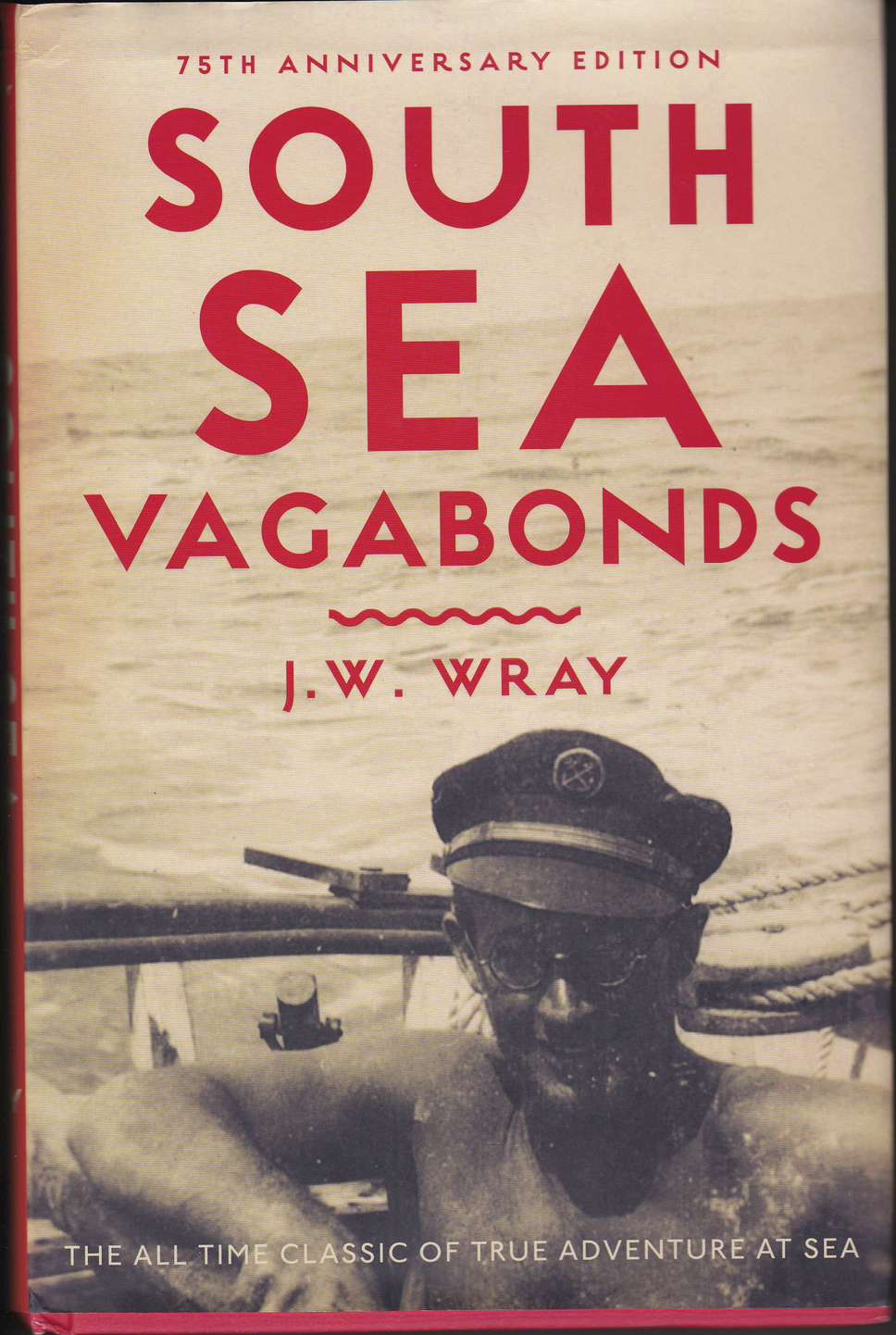
More reviews
- Indigo Blue
- The First Fleet
- The Penguin Book of the Ocean
- Bligh: Master Mariner
- The Reef: A Passionate History

Have you read
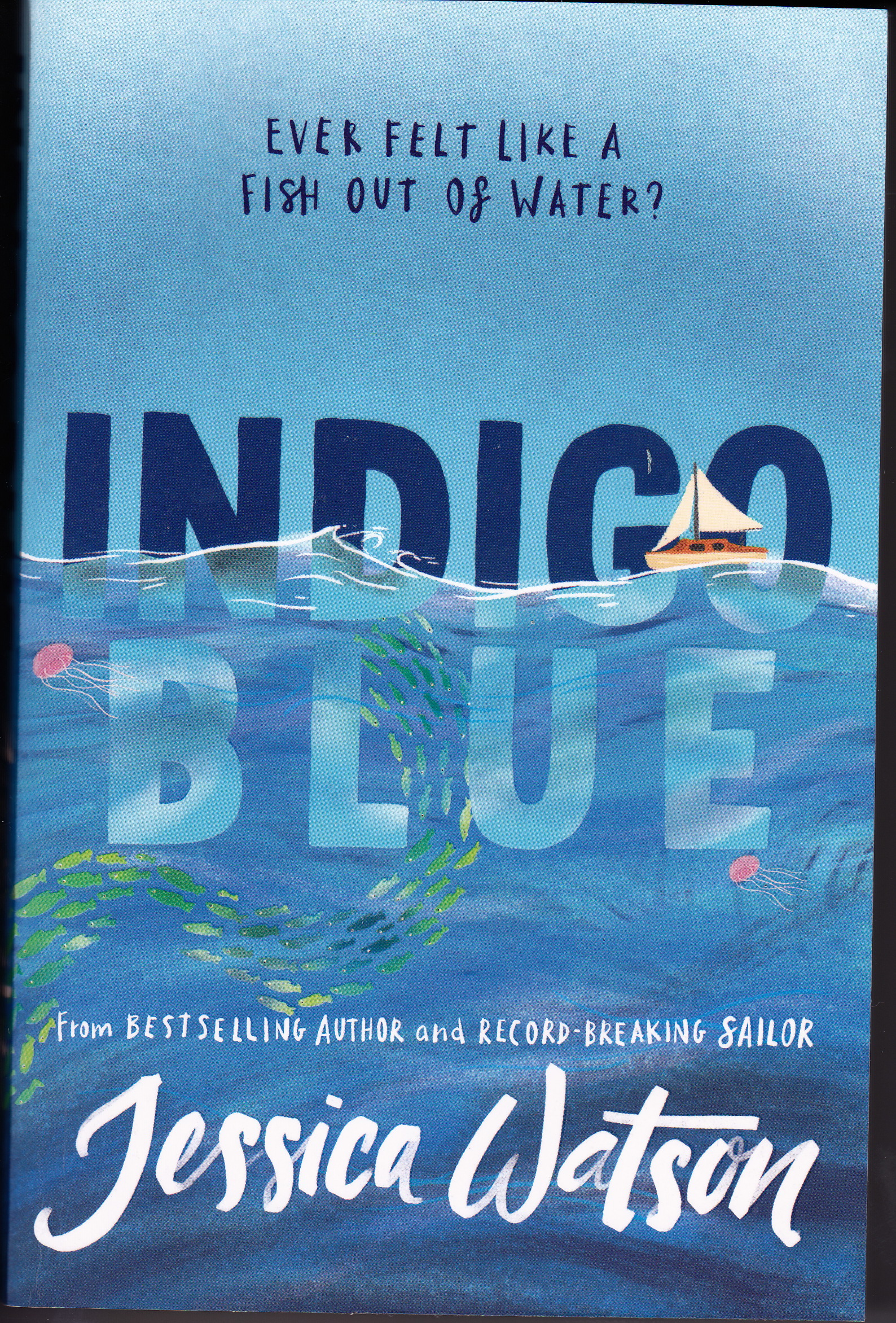
Jessica Watson sails into young adult fiction
She’s famous for her non-stop, unassisted circumnavigation while 16 years old – but Jessica Watson’s new horizons, a website and her writing, are sure to bring her new followers. In Indigo Blue, Watson’s young adult novel, fable, history and adventure combine to make an intriguing story that’s perfect to read over a weekend by the…
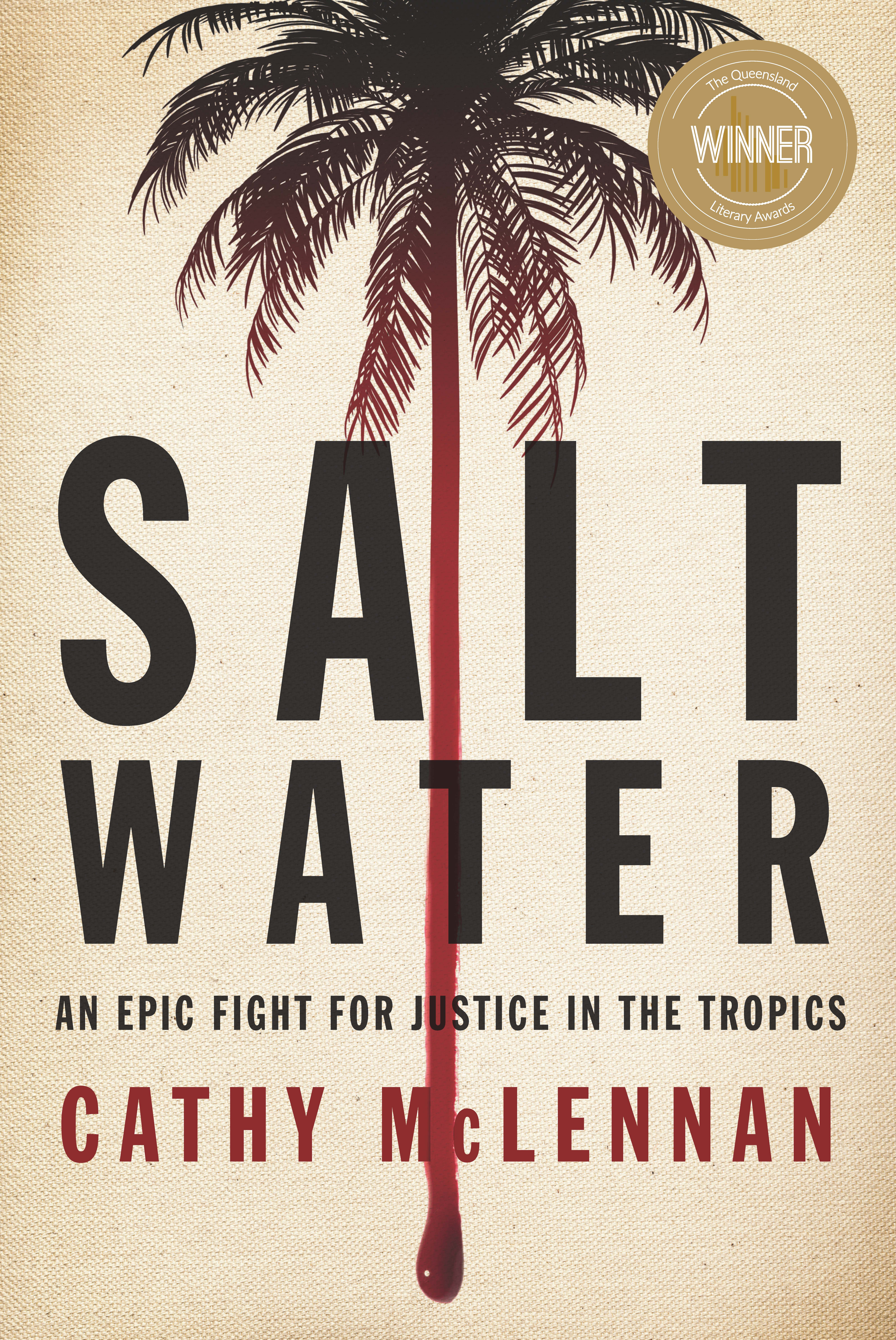
Search for justice in the tropics
Cruisers passing Queensland's Magnetic Island and Palm Island further north are, at first, probably more focussed on the weather and the water and the blessed landscape than on the social and cultural issues of the area. But sooner or later any moderately curious person would become interested in the lives of the communities who host…
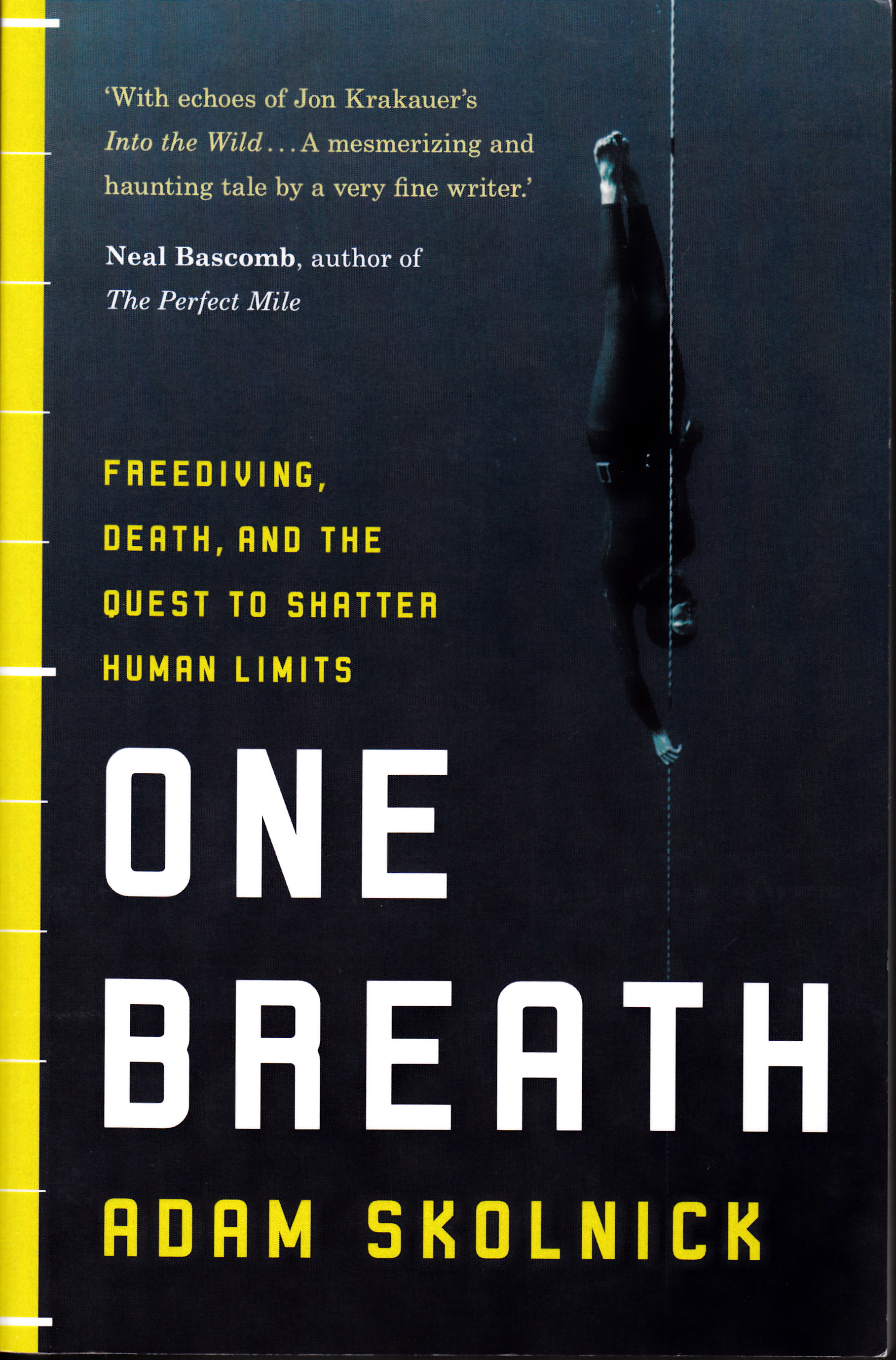
A dive to the edge of darkness
One breath. That’s one long out-breath because the air, accumulated through slow inhalations and then “sipping” to saturate the lungs with every scrap you can fit in, is all you have to last down to your chosen depth and back up again if you are a freediver. It’s a breath that could be your last…
… there is nothing - absolutely nothing - half so much worth doing as simply messing about in boats. - Ratty to Mole in The Wind in the Willows by Kenneth Grahame

- Boat Reviews
- Retro Boats
- Digital Edition
- Competitions

Time & Tide
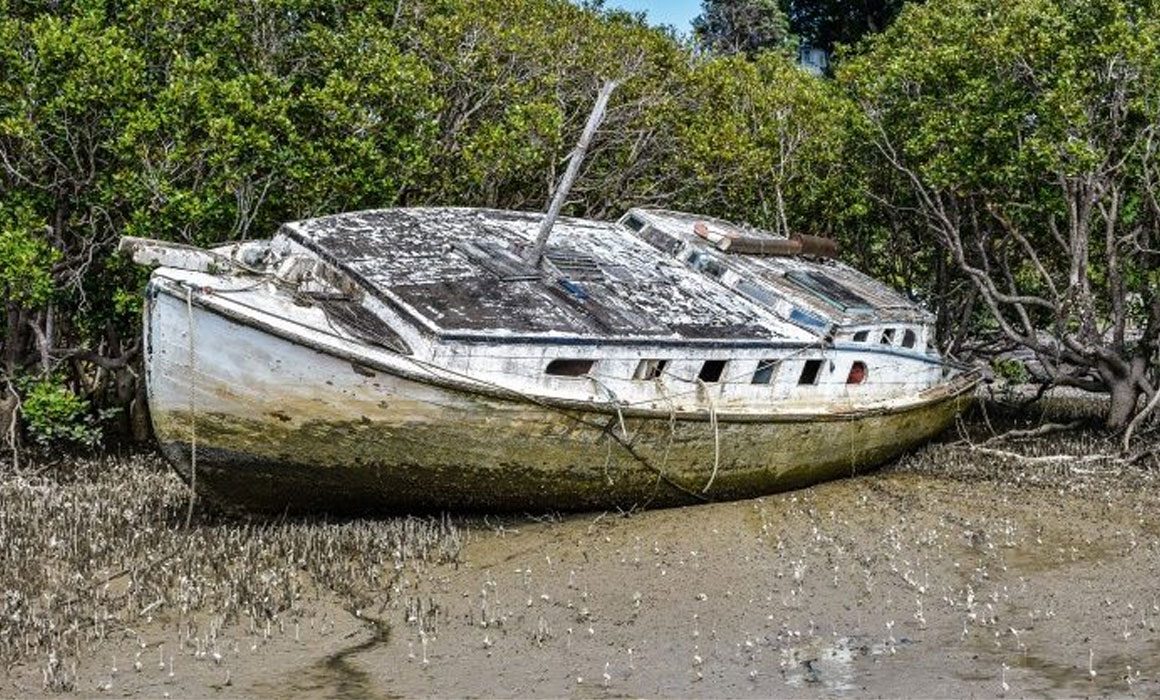
Johnny Wray didn’t want a knighthood or panhandle for sponsorship, but he probably inspired more Kiwis to go sailing than anyone ever has. Waihape , his last boat and the one he owned the longest, is languishing among the mangroves in Hokianga Harbour. Story by Lindsay Wright
In the time it takes to lick an ice cream down to the cone, you can walk from central Rawene, to where a tangle of mud-footed mangroves crowds the beach. Bits of broken boat are strewn on the foreshore but it’s easy to make out the broad transom and art-déco deckhouse of Johnny Wray’s Waihape.
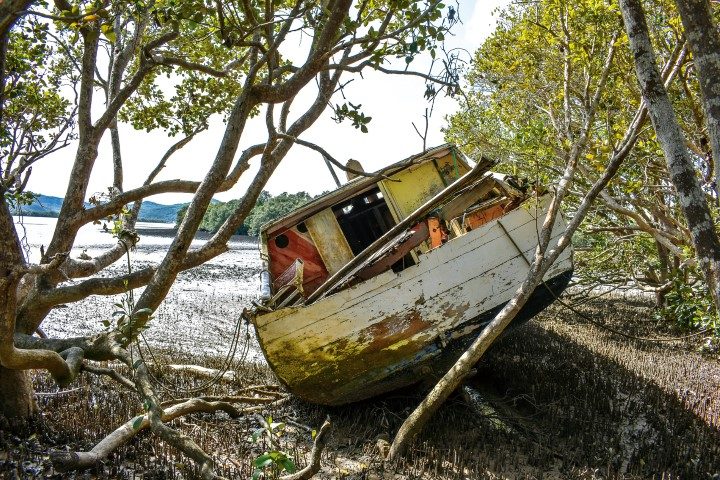
Broken windows and a partly-demolished cockpit have let rain in, but the hull is not irreparably breached and most of the frames seem intact. A 3LW Gardner and Gardner gearbox have deteriorated to a rusty lump amidships and slimy mud coats the bilges, but a nameplate on the deckhouse still carries the derelict’s name.
Most of the planks are full-length kauri and the copper rivets seem tight. It’s a place to spend quiet time – like a decaying shrine to the iconic Kiwi seaman, boatbuilder and voyager.
Waihape, it must be said, was a very different boat from Wray’s legendary first build, Ngataki – the vessel central to his enduring classic – South Sea Vagabonds. And he says as much. Writing in the May 1949 edition of the Australian magazine Seacraft, Wray writes the following about his new boat:
“On 5th December last, I, and about 40 other AuckIand yachtsmen, launched my latest boat, which I, together with the aforementioned 40 other Auckland yachtsmen well and truly christened Waihape (a Maori word meaning ‘to always return’).
“This was, as can well be imagined, a big event in my life, marking the end of a long story of boatbuilding, and also marking, I hope, the beginning of an even longer story of cruising and beachcombing.
“She is a ketch-rigged motor sailer, 44ft by 13ft with a shallow draught of 3’ 6”. The idea was to have a boat small enough to sail single-handed, large enough to go anywhere in comfort, and capable of cruising for at least six months without touching civilisation. Sounds easy enough, but it took a bit of working out.
“An electric refrigerator has a deep freeze compartment that will carry 300lbs of meat at 16oF below zero, so it will last indefinitely.
The fuel tanks total 500 gallons and the fresh water tanks also total 500 gallons, making 1000 gallons altogether. The main engine is a 16hp Lister diesel driving a 24 by 24 propeller through a 2:1 reduction gear.
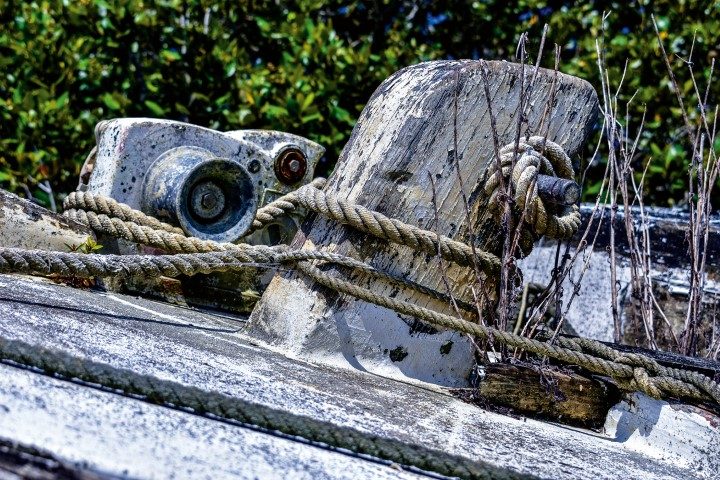
“It is not very powerful, but it is reliable and economical, which is far more important for extended cruising. There is also an 8hp Lister diesel which drives another propeller of the same size through a 3:1 reduction, or a 110-volt 4kW generator. So there is plenty of electricity floating about.
“And there are plenty of gadgets to use it – about 1,000 watts of lights, electric capstan, refrigerator (which hogs the juice), shower pump, bilge pumps, lavatory, exhaust blowers, radio, stove lighters, etc. Both engines are cooled by freshwater in a 20-gallon tank in the engine room, from which the hot water system runs, including a hot shower in a small shower room – a brilliant idea.
“When the cooling water reaches about 180oF it is diverted through cooling pipes under the boat. The Freon 12 liquid of the fridge is also cooled through pipes under the boat, which is more efficient than the air-cooled or heat exchanger units. From the cockpit one goes into the galley, where it could be said that I have spread myself a bit.
“To my mind most galleys are too small considering the time you spend in them. Mine is 14’ by 12’ with 7’ headroom. It sounds far too big, but it is well filled up and the actual floor room is only about 6’ by 8’.
“On the port side there is a steering position (for inclement weather there is also steering by tiller in the cockpit), a small shower room, the fridge and a number of lockers. To starboard there is a plate rack, a 5’ stainIess steel sink bench, three Coleman benzene stoves set in gimbals in stainless steel, and – my pride and joy – a 3’ enamelled wood stove with a healthy-sized oven that is excellent when there is any serious cooking to be done, such as baking bread or roasting.
“There is plenty of driftwood to be picked up and the old stove is seldom out. The main cabin has a large table 5’ 6 by 4’ 6 under which is a 300-gallon water tank. It has seats on three sides and two bunks on the starboard.”
This is all a far cry from Johnny’s earlier vessel, Ngataki, with her driftwood construction, #8 fencing wire fasteners and 44-gallon drum tankage – but when he built Waihape he was 18 years older and just finished a lucrative war time stint as navigator, then in air-sea rescue boats, for the RNZAF.
“The whole set up sounds very complicated and expensive,” he admitted, “for someone who has loosely been described as the uncrowned king of the beachcombers. It is complicated – my homemade switchboard is 6’ high and has 32 switches, five meters and three field rheostats, fuses etc – and gave me a few headaches – but it was not expensive.
“The engines, stoves, tanks and sink were the only things that cost real money. All the gadgets were driven by old, burned-out car generators that I rewound to suit the job. I rewound a dozen car generators – so now I consider myself, among other things, an armature winder.
“You have to be a jack-of-all-trades to build a boat this size singlehanded,” he continued. “Besides being a mere boatbuilder you have to be engineer, sailor, plumber, glass cutter, electrician, painter, rigger, cabinet maker, carpenter….and bull’s wool artist.”
“It would have given me a terrible fright if I had thought of all the things that I would ultimately have to do – I would never have started it. I worked about half part-time and half full-time – 12 hours a day, six days a week,” he wrote. At the same time he also built six dinghies inside Waihape and sold them to help pay for materials.

First off, he built an 18’ launch – Sprat – and reverted to the modus operandi he’d used building Ngataki – salvaging kauri logs off beaches in the Hauraki Gulf, often chugging through a small opening in the anti-submarine boom erected to safeguard Auckland Harbour in wartime, dodging patrol boats and searchlights, bound for the nearest sawmill.
Sprat was painted dark blue for maximum stealth. He remarked that there weren’t as many logs around as there had been when he built Ngataki and he had to go a lot further afield to get enough.
Ngataki was sold to pay for the engines and other fittings but Waihape was built on the cheap too. He had also learned a bit about boat launching. Ngataki fell over twice and survived other mishaps, including almost flooding through the vacant stern gland during launching. Waihape, though, slid smoothly down the ways from a shed on the Wray’s Waiheke Island property and into her natural element.
Waihape was a curious vessel,” author Bruce Ansley says in the foreword to the 2014 edition of Wray’s South Sea Vagabonds. “It took him five years to build – much longer than Ngataki.” Ansley also recorded Wray’s assessment of the boat: ‘all the things I wanted in my dream boat were put in a pot and boiled up – with the result that the finished boat turned out like nothing on earth.’
“She had two short masts to carry sail, and a ‘turtle deck’ with a varnished wheelhouse at the back,” Ansley added. “She may not have been beautiful – but she was seaworthy. She made at least four return trips to Tonga and, with his (Tongan-born] wife, Loti, he cruised up the Great Barrier Reef in Australia.”
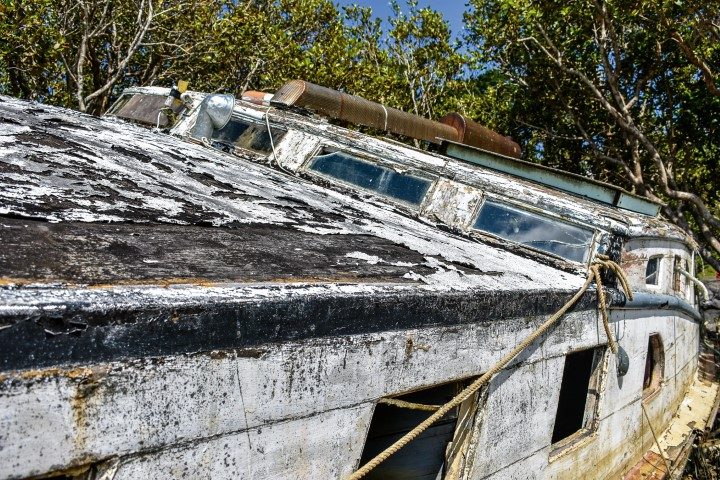
Within a few decades an onslaught of yachting bureaucracy would have kept Waihape tied to the wharf – no lifelines, no stanchions, no EPIRB, flares or SSB, no trysail or plotter – just commonsense and good seamanship.
At home on Waiheke Island, Wray used the boat for fishing, selling his catch from the wharf at Matiatia or anchoring in shallow water off Oneroa so people could wade out to buy dinner.
Eventually old age forced Waihape’s sale and Wray sat on the wharf with his neighbour and soul mate, Harry Sooma, and wept while she sailed for Great Barrier Island with her new owners. Later, a rebuilt Gardner replaced the Listers and, after about 20 years at Great Barrier, she was sailed to the Bay of Islands to begin a refit which never eventuated. Her next voyage was on a truck to a mangrove berth at Rawene.
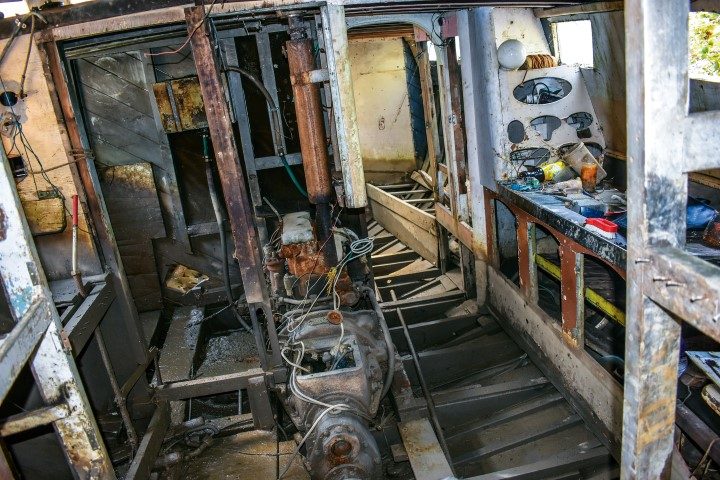
By 1986 Johnny was dead, aged 76, from melanoma and leukemia.
And if he could see Waihape now – he’d still be weeping.
WAIHAPE SPECIFICATIONS
designer & builder J. Wray construction kauri plank/copper rivets loa 13.4m beam 4.0m draught 1.07m engines 2 x Lister (CE and Freedom models) and 3LW Gardner tankage 4500 litres (2250l fuel, 2250l water)
Local men Phil Abbott and Jack Korewhe acquired Waihape and began restoration work but couldn’t find anyone to haul her out and transport her to a builder’s yard in Rawene.
“People went on board and helped themselves to fittings and a solar panel was stolen – then we found she had really bad teredo worm in one of the garboards,” says Phil. “Jack pulled out of the project, then people complained to the harbourmaster about her being there and he threatened to fine me.”

So in March Waihape changed hands again, given to new owners and towed across the harbour to be hauled out of the water and converted into a sleep-out.

Power-on: Trim tabs for safety and speed

Up, up and away!

World-class show

Opportunity knocks
STREAM OF CONSCIOUSNESS
AN ECLECTIC COLLECTION OF IDEAS OPINIONS AND INTERESTS
Monday, March 21, 2016
Ngataki classic yacht race.
4 comments:
Really enjoyed this video, Alden. What elegant yachts. It's great to see those grand vessels still sailing today.
Thanks for your comment Dan. It is great to see our yachting heritage actually sailing, rather than being simply housed in a Museum. Of course keeping them sailing costs money, so it is good that a number of 'Trusts' have been formed to maintain and sail these great old boats.
The yachts of the gilded age (from approximately 1890s - 1920s) were grand indeed. Very nice to look at, but really they were playthings for the wealthy and powerful. Much more appealing to me is the sailing culture of the 50's and 60's, little boats for the middle classes that popularized sailing for average income families. That's what we had when I came of age. My first major purchases were a state-of-the art Laser and a Fiat to carry it around, bought with disposable income as a beginning teacher. Those times seem so far away now. Sad. With the redistribution of wealth upwards and the attendant loss of the middle classes, yachting has gone back to its former ways: toys for the wealthy. (Think of the Americas Cup in San Francisco.) Here in the US even small sailboats like Lasers are well out of reach for most Millennials who in this economy struggle to have steady jobs that would pay for cars, never mind a sailboat or a place to store one. A beginning teacher in America today could not even allow himself to dream of affording to sail a Laser competitively.
Dan, you are right in that yachting has its origins in wealth and privilege, but if you look between the lines of yachting history there have always been people who have been able to 'beat the system'. I am thinking here of the designers Albert Strange and George Holmes (Book: Holmes of the Humber) who formed the Humber Yawl Club in the UK in the late 1890s and who had wonderful adventures along the coast and as far away as the waterways of Europe sailing their very small 'Canoe Yawls'. There are a number of examples such as this in the maritime literature. We both share the working class experiences of that golden age of centreboard sailing of the 1950s and 60s. But to get a larger yacht during those days meant that as a beginning teacher myself I had to build my own 30 foot keel boat at home in my parents back yard. Today the banks would lend me the money or I could go the less wise route (but doable) and put the cost of a keeler on the house mortgage. I don't support what really is an obscenity when it comes to the whole Americas Cup fiasco and I resent the fact that the NZ tax payer puts money into this (The benefits to the country are I think over rated and under researched). I agree that working people are up against it when it comes to being able to purchase state of the art competitive yachts. An Olympic Finn - $40,000+, Ok Dinghy - $27,000, Laser - $10,000, NZ Starling - $9000 ..... and what is worse is that with the way employment law has gone in New Zealand a lot of young people don't have adequate time off to compete seriously in any sport.... don't get me started!!!!!! But one of the ironies of all this is that entry level can be easily made (whether Keeler or centreboard yacht) because there is now a wealth of good boats available on the second hand market... ... With a bit of work and effort you can make a boat competitive again... yesterday in my restored Starling I won all three races in the OYCs Tuesday evening events, and last weekend (8 races over 2 days) I was placed 2nd overall : > )
Post a Comment

IMAGES
VIDEO
COMMENTS
Ngataki has since been faithfully restored by the Tino Rawa Trust and launched on the 8th August 2014 after a four year restoration. The televised launch in the Viaduct Harbour coincided with the 75th Anniversary Edition release of Johnny Wray's 'South Sea Vagabonds' by Harper Collins. ... The yacht requires the design and fabrication of ...
Wray's iconic yacht Ngataki, after a four-year extensive restoration. The yacht and Johnny Wray became boating and adventure legends through the popularity of his book South Seas Vagabonds. Through the book, Johnny inspired a generation of New Zealand and overseas sailors to 'have a go'. To coincide with the re-launch of Ngataki, the
Ngataki built by Johnny Wray in 1933, inspiration for his book "South Sea Vagabonds" taking part in a Classic yacht race on The Waitemata Harbour on 4th Marc...
NGATAKI / JOHNNY WRAY SOUTH SEAS VAGABONDS Big day down at the waterfront yesterday, we had over 200 people turned out for the Tino Rawa Trust re-launch of Johnny Wray's Ngataki & the Harper Collins launch of the 75th Anniversary edition of 'South Sea Vagabonds'. Todays post is a photo essay of yesterdays events. As…
She will be featured in the Auckland Wooden Boat Festival and will also travel to Hobart for the Australian Wooden Boat Festival in early 2025 - something we'll tell you more about soon. Ngataki is 34ft (10.36m) and is constructed of Kauri Carvel. She was built in 1933 and she has had several restorations with the latest reverting her back ...
One of New Zealand's best-loved books is South Sea Vagabonds, Johnny Wray's amazing true story of building and sailing his yacht Ngataki during the 1930s. In this news report, Awarua Radio relays the welcome news that Ngataki and her crew have survived another of their adventures. New Zealand Herald, 11 March 1935, p 8.
South Sea vagabonds. In 1933 a young unemployed Aucklander, Johnny Wray, built a 35-foot cutter in his back yard. He found material for the boat, Ngataki, all over the Hauraki Gulf. The story of his subsequent cruising in the Pacific, South Sea vagabonds (1939), made him a romantic hero.
The 75 th anniversary edition of Wray's South Sea Vagabonds (published in 2014) has the sepia-toned Wray on its cover, jaunty captain's cap on his head, at home in his beloved Ngataki. Bruce Ansley's lively and informative introduction to the new edition fills in some telling detail of Wray's background. His legend has outlived him.
Fired from his day job during the Great Depression, Johnny begged, borrowed and stole the materials to build his famous yacht Ngataki. With some mates for company and a sextant to steer by, he set sail for the palm-fringed atolls and islands of his dreams - to discover they really did exist. But South Sea Vagabonds is much more than just a ...
Yacht built in 1933 by 21-year-old Johnny Wray in his backyard in Remuera Road, Auckland, from scrap metal and wood. With this yacht, he became the first New Zealand solo sailor in the Pacific and wrote a book in 1939 about his expeditions called 'South Seas Vagabonds'. The yacht has changed hands several times since then and was restored in 2015.
Ngataki Given the number of enquiries we receive about Ngataki, note that the work undertaken by MCN Shipwrights Ltd to address the boat's structural deficiencies was completed in May 2012. After 10 months of outside storage Ngataki was finally moved off our premises to be re-commissioned by the trust that owns her. ... Johnny Wray's yacht ...
After the war he made his home on Waiheke Island with his Islander wife Loti. Wray sold NGATAKI in 1946 and after several owners Debbie Lewis became its custodian and sailed it around the world before donating it to the Tino Rawa Trust in 2010. In a way this treasure of a book, South Sea Vagabonds is Johnny Wray's legacy.
At North Head, Te Rapunga led Ngataki by half a mile and drew steadily away in the broad lead up the coast into a rising easterly. Te Rapunga last sighted Ngataki off Kawau at dark, an hour's sail astern. The Trans-Tasman race from Auckland to Melbourne had started at 2.46pm, Saturday 8th December 1934, from a mark off the Akarana Yacht Club ...
It was a progression from Johnny Wray and his yacht Ngataki - anybody with the determination, energy, good health and commonsense could build their own boat quickly and relatively cheaply, put it in the water and sail the world. ... Some 36 ferro yachts were under construction in the Waikato area when I was elected commodore of the ...
Fired from his day job during the Great Depression, Johnny begged, borrowed and stole the materials to build his famous yacht Ngataki. With some mates for company and a sextant to steer by, he set sail for the palm-fringed atolls and islands of his dreams - to discover they really did exist.
Last week the classic wooden boating community were treated to a double whammy - the re-launch of Johnny Wray's yacht Ngataki & the launch of a 75th Anniversary edition of his book 'South Seas Vagabonds'. A grandson, Kelly Hunt, of one of Ngataki's original crewman - Snow Hunt was on hand to film the official side of the occasion.
The Trusts annual 'Classic Yacht and Launch Exhibition', as part of Auckland City Heritage Week, showcases yacht designers, boat builders and designs. The exhibitions include yachts, launches and dinghies, static displays and history boards. ... Line drawing of Ngataki (Roger Hill 2023) Tino Rawa Trust Charities Commission Registration ...
Ngataki was sold to pay for the engines and other fittings but Waihape was built on the cheap too. He had also learned a bit about boat launching. He had also learned a bit about boat launching. Ngataki fell over twice and survived other mishaps, including almost flooding through the vacant stern gland during launching.
NGATAKI VIDEO - PART THREE - Tony Stevenson - Tino Rawa Trust Last week the classic wooden boating community were treated to a double whammy - the re-launch of Johnny Wray's yacht Ngataki & the launch of a 75th Anniversary edition of his book 'South Seas Vagabonds'. A grandson, Kelly Hunt, of one of Ngataki's…
Join us as the Tino Rawa Trust shares the story of John Spencer, one of New Zealand's most talented designers, his boat-building history and his invaluable contribution to New Zealand sailing. Event Dates:Fri 6- Sun 8 November 2020, 10am-4pm Note: New Date of Exhibition. Event Location: (Karanga Plaza, Wynyard Quarter, Auckland Central) John ...
Ngataki is a community on the Aupouri Peninsula in Northland, New Zealand. State Highway 1 runs through the area. To the east is Rarawa Beach, a mile-long strip of clean silver sand, gently shelving and backed by sand dunes. To the north-east is the Great Exhibition Bay and Rarawa Bay and to the south-west is the long Ninety Mile Beach coastline.
Ngataki Classic Yacht Race My good friend Ben emailed me this Utube video of the famous yacht Ngataki sailing on Aucklands beautiful Waitamata Harbour. Thanks Ben. Ngataki is an important part of New Zealands growing yachting hertitage. Ngataki and her builder are also a symbol of the 'Can Do' or 'Number 8 Wire' Kiwi attitude to life.
NGATAKI VIDEO - PART ONE - Finlay MacDonald - Harper Collins Publishing Last week the classic wooden boating community were treated to a double whammy - the re-launch of Johnny Wray's yacht Ngataki & the launch of a 75th Anniversary edition of his book 'South Seas Vagabonds'. A grandson, Kelly Hunt, of one of Ngataki's…